华为产品系统介绍
- 格式:doc
- 大小:1.31 MB
- 文档页数:4
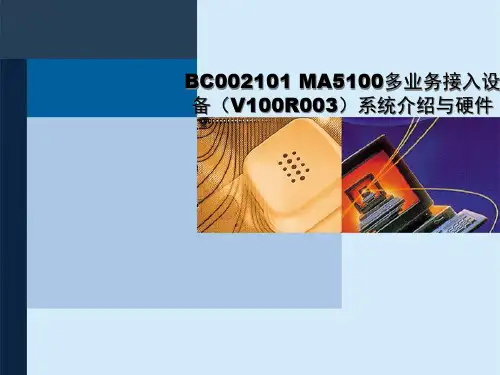
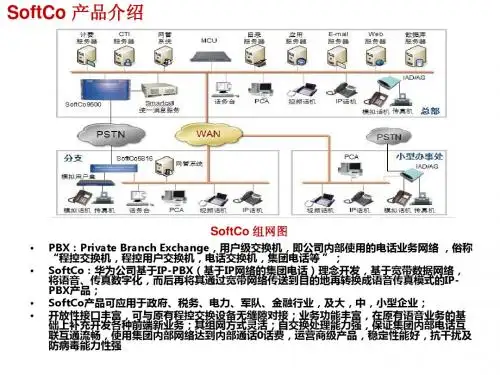
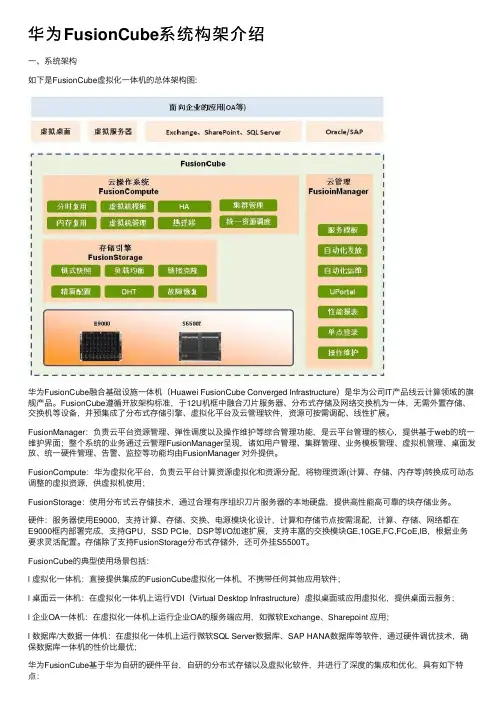
华为FusionCube系统构架介绍⼀、系统架构如下是FusionCube虚拟化⼀体机的总体架构图:华为FusionCube融合基础设施⼀体机(Huawei FusionCube Converged Infrastructure)是华为公司IT产品线云计算领域的旗舰产品。
FusionCube遵循开放架构标准,于12U机框中融合⼑⽚服务器、分布式存储及⽹络交换机为⼀体,⽆需外置存储、交换机等设备,并预集成了分布式存储引擎、虚拟化平台及云管理软件,资源可按需调配、线性扩展。
FusionManager:负责云平台资源管理、弹性调度以及操作维护等综合管理功能,是云平台管理的核⼼,提供基于web的统⼀维护界⾯;整个系统的业务通过云管理FusionManager呈现,诸如⽤户管理、集群管理、业务模板管理、虚拟机管理、桌⾯发放、统⼀硬件管理、告警、监控等功能均由FusionManager 对外提供。
FusionCompute:华为虚拟化平台,负责云平台计算资源虚拟化和资源分配,将物理资源(计算、存储、内存等)转换成可动态调整的虚拟资源,供虚拟机使⽤;FusionStorage:使⽤分布式云存储技术,通过合理有序组织⼑⽚服务器的本地硬盘,提供⾼性能⾼可靠的块存储业务。
硬件:服务器使⽤E9000,⽀持计算、存储、交换、电源模块化设计,计算和存储节点按需混配,计算、存储、⽹络都在E9000框内部署完成,⽀持GPU,SSD PCIe,DSP等I/O加速扩展,⽀持丰富的交换模块GE,10GE,FC,FCoE,IB,根据业务要求灵活配置。
存储除了⽀持FusionStorage分布式存储外,还可外挂S5500T。
FusionCube的典型使⽤场景包括:l 虚拟化⼀体机:直接提供集成的FusionCube虚拟化⼀体机,不携带任何其他应⽤软件;l 桌⾯云⼀体机:在虚拟化⼀体机上运⾏VDI(Virtual Desktop Infrastructure)虚拟桌⾯或应⽤虚拟化,提供桌⾯云服务;l 企业OA⼀体机:在虚拟化⼀体机上运⾏企业OA的服务端应⽤,如微软Exchange、Sharepoint 应⽤;l 数据库/⼤数据⼀体机:在虚拟化⼀体机上运⾏微软SQL Server数据库、SAP HANA数据库等软件,通过硬件调优技术,确保数据库⼀体机的性价⽐最优;华为FusionCube基于华为⾃研的硬件平台,⾃研的分布式存储以及虚拟化软件,并进⾏了深度的集成和优化,具有如下特点:l 简单易⽤FusionCube将服务器、存储和⽹络打包放置在统⼀的机框或机架中,从销售到维护都更简单;l 业务快速部署可以快速部署系统,灵活为企业分配IT资源。
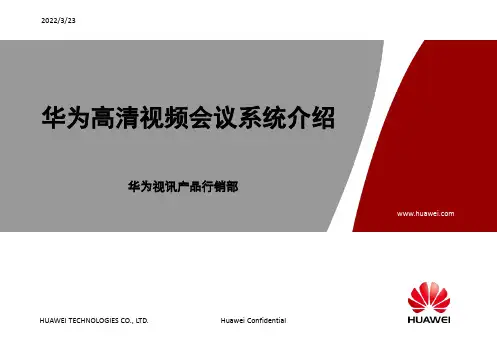
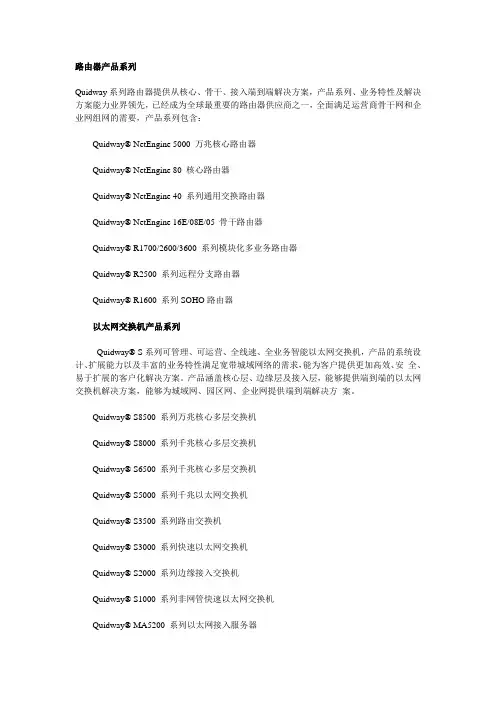
路由器产品系列Quidway系列路由器提供从核心、骨干、接入端到端解决方案,产品系列、业务特性及解决方案能力业界领先,已经成为全球最重要的路由器供应商之一,全面满足运营商骨干网和企业网组网的需要,产品系列包含:Quidway® NetEngine 5000 万兆核心路由器Quidway® NetEngine 80 核心路由器Quidway® NetEngine 40 系列通用交换路由器Quidway® NetEngine 16E/08E/05 骨干路由器Quidway® R1700/2600/3600 系列模块化多业务路由器Quidway® R2500 系列远程分支路由器Quidway® R1600 系列SOHO路由器以太网交换机产品系列Quidway® S系列可管理、可运营、全线速、全业务智能以太网交换机,产品的系统设计、扩展能力以及丰富的业务特性满足宽带城域网络的需求,能为客户提供更加高效、安全、易于扩展的客户化解决方案。
产品涵盖核心层、边缘层及接入层,能够提供端到端的以太网交换机解决方案,能够为城域网、园区网、企业网提供端到端解决方案。
Quidway® S8500 系列万兆核心多层交换机Quidway® S8000 系列千兆核心多层交换机Quidway® S6500 系列千兆核心多层交换机Quidway® S5000 系列千兆以太网交换机Quidway® S3500 系列路由交换机Quidway® S3000 系列快速以太网交换机Quidway® S2000 系列边缘接入交换机Quidway® S1000 系列非网管快速以太网交换机Quidway® MA5200 系列以太网接入服务器Quidway® WA1000 系列无线局域网系统安全网关产品系列Quidway® Eudemon100 系列安全网关Quidway® Eudemon200 系列安全网关Quidway® Eudemon1000 系列安全网关业务系统产品系列VRP(Versatile Routing Platform)通用路由平台;iManager™ N2000/Quidview™ 统一网管系统;CAMS™ 综合访问管理服务器。

华为云产品清单更新日期:2023年2月28日计算1.1裸金属服务器BMS裸金属服务器(Bare Metal Server)为您和您的企业提供专属的云上物理服务器,具备传统物理服务器高性能的同时,兼具云上高安全可靠、灵活快速发放等特点,助力企业在数据库、大数据、容器、高性能计算、AI等场景关键业务云上创新1.2GPU加速云服务器GACSGPU加速云服务器(GPU Accelerated Cloud Server, GACS)能够提供优秀的浮点计算能力,从容应对高实时、高并发的海量计算场景。
P系列适合于深度学习,科学计算,CAE等;G系列适合于3D动画渲染,CAD等1.3FPGA加速云服务器FACSFPGA加速云服务器(FPGA Accelerated Cloud Server, FACS)提供FPGA开发和使用的工具及环境,让用户方便地开发FPGA加速器和部署基于FPGA加速的业务,为您提供易用、经济、敏捷和安全的FPGA云服务1.4云耀云服务器HECS云耀云服务器(Hyper Elastic Cloud Server)是一种可以快速搭建且易于管理的新一代云服务器,提供从1核1G到8核32G的套餐并匹以相对的磁盘空间和公有云带宽,助力中小企业便捷高效的在云端构建电商网站、Web应用、小程序、APP和各类开发测试、学习环境,相比普通云服务器更加简单易用(3步即可完成购买),提供极简上云体验。
1.5弹性云服务器ECS弹性云服务器(Elastic Cloud Server, ECS)是一种云上可随时自助获取、可弹性伸缩的计算服务,可帮助您打造安全、可靠、灵活、高效的应用环境。
1.6弹性伸缩AS弹性伸缩(Auto Scaling, AS)可根据用户的业务需求和预设策略,自动调整计算资源的管理服务。
灵活的使用弹性伸缩可计算资源供应量随业务负载而变化,经济、便捷的保证业务平稳、健康运行。
1.7镜像服务IMS镜像是用于创建服务器或磁盘的模板。
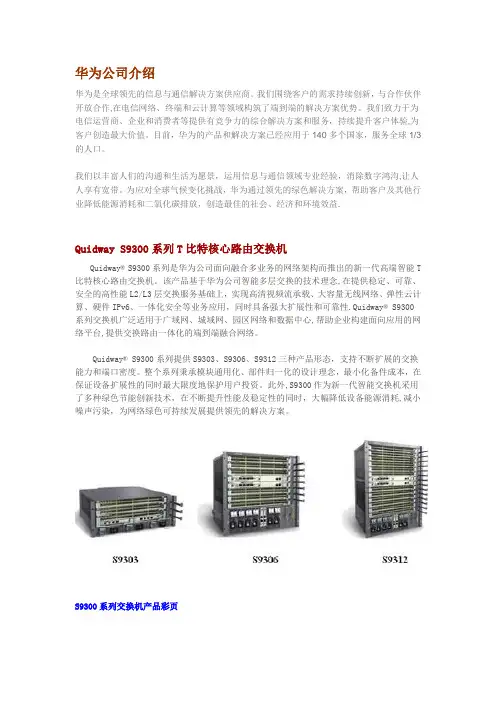
华为公司介绍华为是全球领先的信息与通信解决方案供应商。
我们围绕客户的需求持续创新,与合作伙伴开放合作,在电信网络、终端和云计算等领域构筑了端到端的解决方案优势。
我们致力于为电信运营商、企业和消费者等提供有竞争力的综合解决方案和服务,持续提升客户体验,为客户创造最大价值。
目前,华为的产品和解决方案已经应用于140多个国家,服务全球1/3的人口。
我们以丰富人们的沟通和生活为愿景,运用信息与通信领域专业经验,消除数字鸿沟,让人人享有宽带。
为应对全球气候变化挑战,华为通过领先的绿色解决方案,帮助客户及其他行业降低能源消耗和二氧化碳排放,创造最佳的社会、经济和环境效益.Quidway S9300系列T比特核心路由交换机Quidway® S9300系列是华为公司面向融合多业务的网络架构而推出的新一代高端智能T 比特核心路由交换机。
该产品基于华为公司智能多层交换的技术理念,在提供稳定、可靠、安全的高性能L2/L3层交换服务基础上,实现高清视频流承载、大容量无线网络、弹性云计算、硬件IPv6、一体化安全等业务应用,同时具备强大扩展性和可靠性.Quidway® S9300系列交换机广泛适用于广域网、城域网、园区网络和数据中心,帮助企业构建面向应用的网络平台,提供交换路由一体化的端到端融合网络。
Quidway® S9300系列提供S9303、S9306、S9312三种产品形态,支持不断扩展的交换能力和端口密度。
整个系列秉承模块通用化、部件归一化的设计理念,最小化备件成本,在保证设备扩展性的同时最大限度地保护用户投资。
此外,S9300作为新一代智能交换机采用了多种绿色节能创新技术,在不断提升性能及稳定性的同时,大幅降低设备能源消耗,减小噪声污染,为网络绿色可持续发展提供领先的解决方案。
S9300系列交换机产品彩页产品特点先进交换架构提升网络扩展性•背板具备良好的扩展性,可平滑扩展至更高带宽,支持单端口速率40G、100G平滑升级,同时完美兼容现网板卡,保护初始投资.•超高万兆端口密度,单台设备支持480个万兆端口,助力企业园区和数据中心迎来全万兆核心时代。
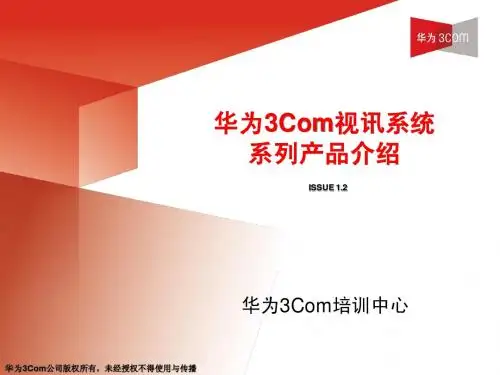
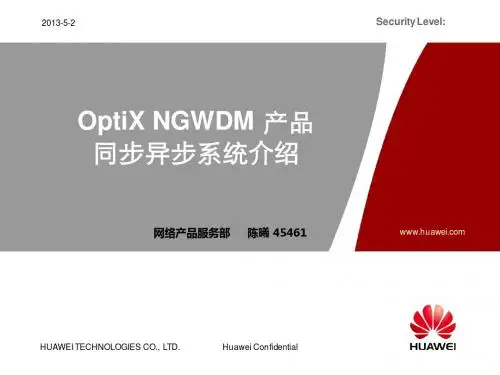
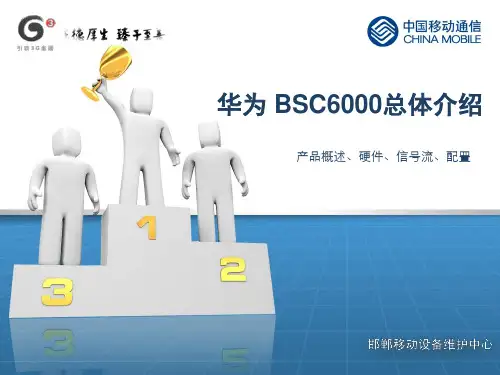
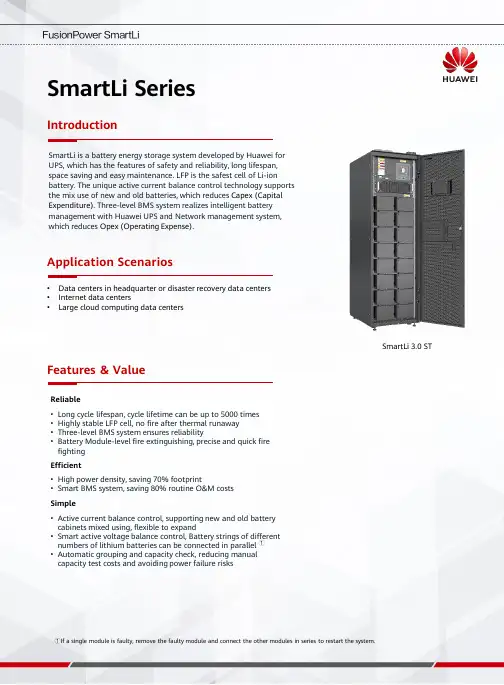
SmartLi SeriesIntroductionFeatures & ValueSmartLi 3.0 STSmartLi is a battery energy storage system developed by Huawei for UPS, which has the features of safety and reliability, long lifespan, space saving and easy maintenance. LFP is the safest cell of Li-ionbattery. The unique active current balance control technology supports the mix use of new and old batteries, which reduces Capex (Capital Expenditure). Three-level BMS system realizes intelligent battery management with Huawei UPS and Network management system, which reduces Opex (Operating Expense).Reliable •Long cycle lifespan, cycle lifetime can be up to 5000times •Highly stable LFP cell, no fire after thermal runaway •Three-level BMS system ensures reliability•Battery Module-level fire extinguishing, precise and quick fire fightingEfficient•High power density, saving 70% footprint•Smart BMS system, saving 80% routine O&M costs Simple•Active current balance control, supporting new and old battery cabinets mixed using, flexible to expand•Smart active voltage balance control, Battery strings of different numbers of lithium batteries can be connected in parallel ①•Automatic grouping and capacity check, reducing manual capacity test costs and avoiding power failure risks①If a single module is faulty, remove the faulty module and connect the other modules in series to restart the system.•Data centers in headquarter or disaster recovery data centers •Internet data centers•Large cloud computing data centersApplication ScenariosBattery Module and Cabinet SpecificationsCellModule Full Cabinet Half Cabinet Configuration Single cell 20S3P 2 groups 1 group Nominal Capacity 27Ah 81Ah 162Ah 81Ah Capacity for calculating the backup time 25.5Ah 76.5Ah 153Ah 76.5Ah Nominal Voltage3.2Vdc64Vdc512Vdc(8+8)448Vdc(7+7)384Vdc(6+6)512Vdc(8+0)448Vdc(7+0)384Vdc(6+0)Charging Voltage 3.4Vdc 68Vdc 544Vdc(8+8)476Vdc(7+7)408Vdc(6+6)544Vdc(8+0)476Vdc(7+0)408Vdc(6+0)Dimension(W*D*H: mm)21*100*140210*765*160600*850*2000600*850*2000Weight605g50kg1000kg@7+7650kg@7+0System Specifications②The backup time is calculated based on the capacity 68.54 kWh and the capacity under different backup time or discharge rates.68.54kWh=25.5Ah*3*2*3.2V*20*7 (The battery cell is 27 Ah. The margin is calculated based on the reserved 25.5 Ah. For details, refer to the battery cell certification report.)ItemDescriptionBasic ParametersProduct Model SmartLi Battery Cell Material LiFePO4(6C)Charging Current ≤ 1C, 0.5C by default Maximum discharge current (battery module)459AMaximum discharge current (battery cabinet)630A (6+6)(7+7)(8+8),315A (6+0)(7+0)(8+0)Cycle Life 5000 cycles @ 50% DODNominal Capacity 162Ah / 82.94kWh (8+8);162Ah / 72.57kWh (7+7);162Ah / 62.20kWh (6+6);Capacity for calculating the backup time ②153Ah / 78.33kWh (8+8);153Ah / 68.54kWh (7+7);153Ah / 58.75kWh (6+6);Weight1100kg (8+8);1000kg (7+7);900kg (6+6)Dimension (W*D*H)600mm*850mm*2000mm Self Discharge ≤5% (0-30℃/3 months)Fire protectionModule-levelCommunication Interface FE, RS485, Dry contactsProtection Over temperature, over current, short circuit, over charge/discharge, etc.Design Life 15 yearsCertification UL1642,UL1973, UN38.3, UL9540A, IEC62619,IEC62133, ,IEC62477, IEC62040Compatibility Huawei UPS, third-party UPS/HVDCDischarge capability 300 kW@10 minutes or 200 kW@15 minutes (7+7, 20-30°C)IP Protection Level IP21 according to IEC60529 standard EnvironmentStorage Temperature 0ºC -40ºC Transportation Temperature-40ºC to 60ºCOperating Temperature 0ºC -40ºC (20-25°C is recommended)Relative Humidity 5% -95%Max. Operating Altitude0 -4000m. Derating is required if the altitude exceeds 1000 m*Monitoring……NetEcoUPS…………Network managementThird-level SBCU systemIntelligent battery management module (Built-in second-levelBCU system)Intelligent battery management module (Built-in second-levelBCU system)Battery module (Built-in first-level BMU)Battery module (Built-in first-levelBMU)Battery module(Built-in first-level BMU)Battery module (Built-in first-levelBMU)Battery module (Built-in first-level BMU)Battery module(Built-in first-levelBMU)Battery module (Built-in first-level BMU)Battery module(Built-in first-levelBMU)MonitoringBMU BCU SBCU MonitoredObject Battery Pack Battery Rack SystemFunction Description •Measure the cell voltage,temperature.•Electrochemical cell voltageequalization;•Communicates with the BMS.•Save the battery modulefault information•Manages all BMUs•Collects statistics onthe battery voltage,temperature, SOC,and SOH, and reportsthe statistics to theSBCU.•Detects the chargeand dischargecurrents of batterystrings to adjust theparallel currentsharing.•Protects the hardwareand batteries againstexceptions,disconnects the loopin a timely mannerwhen an exceptionoccurs, and reportsthe exception to theSBCU.•Save the batterycabinet faultinformation.•Displays the total voltage,SOC, SOH, current, andtemperature of the batterysystem, and batteryinformation of each batterycabinet.•Receives commonparameters reported by eachBCU and saves local data.•Receives alarms andprotection events reported bythe BCU and saves the eventslocally.•Communicates with the UPS,provides human-machineinteraction, communicationsports, and permissionmanagement for local andremote operations, setsbattery management systemparameters, and upgradesprograms.Measurement Parameter Cell voltage Cabinet Voltage System Voltage Cell temperature Cabinet Current System CurrentMeasurement Precision ±0.01V (Cell voltage)±2℃(Cell temperature)±0.3V (Module voltage)±2% (current>40A); 3A(current<40A)±1% (voltage)±5% ( SOC )Display information Battery Module Cell Voltage Battery Cabinet Voltage Battery System Voltage Battery Module SOH Battery Cabinet Current Battery System Current Battery Module SOC Battery Cabinet SOC Battery System SOCBattery Module Maximum CellVoltage Battery Cabinet SOH Battery System SOH Battery Module Minimum CellVoltageBattery CabinetMaximum Cell VoltageBattery System Maximum CellVoltageBattery Module Maximum CellTemperatureBattery CabinetMinimum Cell VoltageBattery System Minimum CellVoltageBattery Module Minimum CellTemperatureBattery CabinetMaximum CellTemperatureBattery System Maximum CellTemperatureBattery CabinetMinimum CellTemperatureBattery System Minimum CellTemperatureDischarge Times Battery CapacityDischarge Capacity Discharge TimesDischarge CapacityProtection FunctionAlarm Type Alarm Description Alarm CauseAlarm AcknowledgmentTimeSolutionBattery charge protection Battery charging lowtemperature protectionThe battery temperature is lowerthan 0°C.30 secondsAlarm, charging stop Battery chargeovertemperature protection 1The battery temperature exceeds60°C.30 secondsBattery overvoltageprotection 1The battery voltage is higher than3.65 V. 1 secondStop chargingBattery string overvoltageprotection 1The battery string voltage isgreater than 3.525NV. 1 secondBattery cluster overvoltageprotection 1The battery string voltage isgreater than 3.525NV. 1 secondBattery overvoltageprotection 2The battery voltage is higher than3.9 V. 1 secondDisconnect the battery switch. Battery chargeovertemperature protection 2The battery temperature exceeds67°C.30 secondsBattery string overvoltageprotection 2The battery string voltage isgreater than 3.65 N V. 1 secondBattery cluster overvoltageprotection 2The battery string voltage isgreater than 3.625 N V. 1 secondBattery charging overcurrentprotection Greater than 300 A20 msBattery discharge protection Battery low voltageprotection 1The battery voltage is lower than2.5 V (the value range is 2.5 V to2.8 V).600 msAlarm, discharge termination Battery dischargeovertemperature protection 1The battery temperature exceeds65°C.20 seconds.Battery string low voltageprotectionThe battery pack voltage is lessthan 2.55N V 2 secondsBattery cluster low voltageprotectionThe battery cluster voltage is lowerthan 2.55NV. 2 secondsBattery low voltageprotection 2The battery voltage is lower than2.3 V.700 msTurn off the battery switch. Battery discharge lowtemperature protectionThe battery temperature is lowerthan 0°C.30 secondsBattery dischargeovertemperature protection 2The battery temperature exceeds67°C.10 secondsBattery discharge overcurrentprotectionGreater than 930 A (7 + 7 fullcabinet)12 seconds.Battery charge alarm Battery charging lowtemperature alarmThe battery temperature is lowerthan 5°C.30 secondsAlarm Battery chargeovertemperature alarmThe battery temperature exceeds55°C.60 secondsBattery overvoltage alarm The battery voltage is higher than3.8 V. 5 secondsBattery cluster overvoltagealarmThe battery cluster voltage isgreater than 3.55 N V. 5 secondsBattery string overvoltagealarmThe battery string voltage isgreater than 3.60 N V. 5 secondsBattery charge overcurrentalarm Greater than 192 A 5 secondsBattery discharge alarm Battery discharge lowtemperature alarmThe battery temperature is lowerthan 5°C.30 secondsAlarm Battery dischargeovertemperature alarmThe battery temperature is higherthan 60°C.30 secondsBattery low voltage alarmThe battery voltage is lower than2.9 V and the SOC is less than orequal to 60%.5 secondsLow battery string voltagealarmThe battery string voltage is lowerthan 2.95 N V and the SOC is lessthan or equal to 60%.5 secondsLow battery cluster voltagealarmThe battery cluster voltage isbelow 2.8N V. 5 secondsBattery discharge overcurrentalarmGreater than 870 A (7 + 7 fullcabinet)10 secondscell voltage imbalanceThe highest voltage of the cell isgreater than or equal to 3.3 V andthe voltage difference between thecell and the lowest voltage isgreater than or equal to 500 mV.60 minutes Alarm Cell temperature imbalanceDifference between the highesttemperature and the lowesttemperature of the cell ≥ 20°C5 minutes AlarmBattery health alarm Battery string replacementalarm Battery string SOH < 70%Immediately AlarmCharge at Different Charging TateDischarge at Different Discharge RateLifetime at Different TemperatureESM-6476AS1 float charging life at different temperatureCycle Lifetime at Different Temperature and DODESM-6476AS1 Cycle life at different temperature and different DODCopyright©Huawei Technologies Co.,Ltd.2021.All rights reserved.No part of this document may be reproduced or transmitted in any form or by any means without prior written consent of Huawei Technologies Co.,Ltd.。
华为集成产品开发管理IPD体系详细介绍-超级干货PPT图文!集成产品开发(IPD Integrated Product Development)来源于PACE(Product And Cycle Excellence,即产品周期优化法,为全球领先的研发咨询机构PRTM 公司提出的研发管理模式),是经过IBM等领先企业的实践,总结出来的一套先进、成熟的研发管理思想、模式和方法。
在美国,众多著名企业纷纷实施IPD,以提升创新能力。
在国内,华为公司从1998年开始率先引进并实施IPD,使产品创新能力和企业竞争力大幅度提升。
那么,IPD究竟是一套什么样的系统?IPD如何解决企业研发管理中的一些顽症(如:市场导向不足、规划流于形式、部门协调困难、研发与市场脱节、研发流程执行不力、研发绩效难以评价等等)?为何业界越来越多的企业在学习IPD、实施IPD?为何有些企业实施IPD后效果不佳?IPD是否适合于中小企业?IPD是否适用于各个行业?IPD的精髓是什么?IPD与其它研发管理模式有何关系和不同?IPD的基本方法是什么?如何实施IPD?......针对以上诸多问题,华为公司对外内训和咨询资深讲师和顾问、《智慧研发管理》作者谢宁老师特撰写本文,以供各位参考学习。
一、集成产品开发管理IPD对企业的价值贡献到底是什么?谢宁老师在培训课程中,经常抛出这样的问题:企业为什么要学习了解IPD?IPD对企业的根本价值贡献到底是什么?从企业对这个问题思考的深度,可以看出企业对IPD的认知价值。
对于这个问题的思考,有兴趣交流的同学可以私信给谢宁老师。
华为认为为客户服务是华为存在的唯一理由。
从公司发展层面看,为客户创造价值的2大1小主业务流:围绕三个“端到端”业务开展:从客户需求到产品上市的开发端到端、从销售机会到合同交付的端到端、客户问题处理与客户服务的端到端(如下图所示)。
二、华为IPD的实践历程早在1998 年,华为就开始自己学习研发管理体系,摸索实施研发管理优化。
openEuler开源,共同繁荣计算产业生态齐景望华为鲲鹏基础软件技术专家目录1.华为服务器操作系统应用情况2.华为服务器操作系统特性介绍华为服务器操作系统发展历程——10年磨砺,厚积薄发启动研究201020122013201620172019开始商用版开发(50+专利技术)存储产品商用昆仑服务器商用(UNIX03认证)ARM架构电信领域商用(德电、法电、西电等)华为云商用(LSB 5.0标准)计算、存储、核心网全面商用华为鲲鹏920(CC EAL4+认证)华为服务器操作系统已伴随华为产品广泛应用于全球各大客户•电信、移动、电力、航天科工、媒体、高校、政府等国内数百个局点•德电、法电、俄罗斯、新加坡、墨西哥、印尼等数十家海外运营商领域•欧洲航空、西班牙BME、英国ZYCKO、法国YTO等近百家海外大企业系统……◆华为消费者云、华为云、存储设备中超过10万台稳定运行超过5年◆集成在华为电信产品中,在全球各大运营商超过10万台设备中稳定运行超过6年应用案例1——华为CT 领域(TaiShan )云通信场景TPS VM IOVM 包率其他系统华为鲲鹏+ 华为服务器操作系统提升50%降低30%计算(tps)时延(us)包率(Mpps)提升30%☐虚拟化技术✓网络动态分发技术负载感知后端轻重分离前端直通✓Non-Strict 模式快速表释放、SYNC 加速✓DDIO(Data Direct I/O),解决Cache 冲突✓匹配多核能力的I/O 并行加速应用案例2——华为IT 领域IOPS 并发时延其他系统华为鲲鹏+ 华为服务器操作系统双控单控IOPS(W)倍数级领先☐高性能IO✓全用户态IO 栈:IO 端到端免锁、零拷贝、零中断✓深度优化:热点指令预取、条件语句优化、堆栈操作精简高端企业存储场景时延(us)降低60%应用案例3——某省移动国产化核心系统部分引用:/article?id=455481某省移动CRM 系统能力开放平台:业务:xx 掌厅、智慧随身厅、在线客服等互联网生态开放业务流量:日交易量高达7000万次+,B 域60%以上的业务量CRM 全国产化系统方案☐前端应用效率提升☐数据库时延对比Kunpeng 920+ 华为服务器操作系统GaussDB OLTPGaussDB OLAP(JDBC/ODBC/Python/CLI)Kunpeng 920 + 华为服务器操作系统HWJDK OpenASTPCLOUD 集群数据库层中间件层应用层各业务查询原系统华为鲲鹏+华为服务器操作系统平均提升34.3%用户信息账单账户余额积分流量……SelectUpdateMySQLPG华为鲲鹏+华为服务器操作系统最大降低50%降低80%目录1.华为服务器操作系统应用情况2.华为服务器操作系统特性介绍华为服务器操作系统关键特性介绍华为服务器操作系统紧密结合华为鲲鹏处理器,提供内核、基础库、虚拟化、容器、工具链等基础软件栈能力,具备高性能、高可靠性、安全可信、开源开放的生态等特点。
知识点1:您是否知道盒式交换机如何选型,哪些是二层交换机,哪些是三层交换机?
S1700全部款型均是二层交换机,不同款型分下行百兆和下行千兆(型号名称中带有G的表示下行口为千兆,如S1700-52G FR-4P-AC;没有G为下行百兆)。
S2700全部款型均是下行百兆二层交换机。
S3700全部款型均是下行百兆三层交换机。
S5700中S5700-LI系列、S5700S-LI系列和S5710-LI系列是下行千兆二层交换机(只要名称中带LI的都是二层),其余系列是下行千兆三层交换机。
S6700是全万兆三层交换机。
知识点2:您是否知道插卡的作用,哪些交换机型号是支持插卡的,如何识别?
交换机系列是否支持插卡
S1700不支持
S2700不支持
S3700仅HI系列支持
S5700除S5700-LI系列、S5700S-LI系列和
S5700-26X-SI-12S-AC型号外,其余型号
支持
S6700不支持
告诉小伙伴们一个快速识别的方法:只要型号名称中带有C字样的,表示这款型号支持插卡,如S5700-28C-EI。
比较特殊的几款:S5700-SI系列中的S5700-24TP、S5700-48TP名称中不带有C,不支持业务口插卡,但是支持堆叠插卡。
知识点3:您是否知道哪些交换机型号支持PoE供电,最多能支持多少接口?
交换机型号名称中带有PWR字样的表示这款型号支持PoE供电,如S5710-52C-PWR-EI。
交换机系列支持的最大PoE供电接口
数(802.3af标准)支持的最大PoE供电接口数(802.3at标准)
S1700不支持PoE供电
S27008/16/24/48个4/8/12/24个
S37008/16/24/48个4/8/12/24个
S57008/12/16/24/48个4/6/8/12/24/26/48个S6700不支持PoE供电
如果小伙伴们想了解更多与交换机型号名称相关的内容,可以参考交换机的命名规则/ecommunity/bbs/10144227.html?p=1#p1*******。
知识点4:您是否知道交换机出了哪些软件版本?与型号的匹配关系是怎样的?
S1700:S1700的三个软件版本为独立关系,彼此之间不能进行升、降级,比如V1R6C00版本支持的设备不能升级到V1R7C00。
S2700/3700/5700/6700:不同型号与版本间的匹配关系不同,详见下表。
同一型号在支持的软件版本间可以进行升、降级。